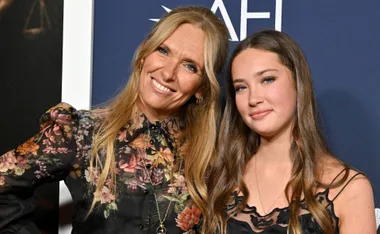A gorgeous garden costs money – or does it? All our garden plants once grew wild – and managed to create new plants all by themselves.
Some of today’s plants are hybrids – if you collect their seed they won’t grow like their parents. But a surprising number of common garden plants are veryeasy to grow – and a great way to
a. have fun and,
b. fill your garden with flowers and greenery for nothing.
How to find the plants you need:
Ask! Most gardeners love giving away seeds and cuttings. Even gardeners tending public gardens will often give away prunings in winter, especially rose prunings, which will grow if you stick them in the ground. One batch of prunings can give you a dozen glorious rose bushes!
Or… have a go. At the most you’ll lose a few minutes work. But at best you’ll end up with a fascinating hobby, healthy exercise – and a garden that gives you fulfilment and joy.
Helpful hints
Cuttings:
This is the easiest way of all to grow new plants. You just take a bit of plant, put it in the ground, and wait for it to grow – in fact, many times it will be just that simple. Plants like geraniums (pelargoniums), wormwood, santolina and lavender rarely fail. Other times you will need to know what time of year to put the cutting in.
If you can, take cuttings on a cool, wet or overcast day; this way they’ll lose less moisture. Plant them as soon as you can. If you’re not going to plant straightaway, put the cuttings in a plastic bag and place it in the refrigerator, wrap the ends in damp newspaper, or put cuttings in a vase of water. Any plant with a milky sap, though, like figs, frangipanis and cacti, should be left to dry for a couple of days to minimise the risk of rotting. Use a sharp knife if possible or cut the end straight before planting the cutting in a pot of potting mix or clean sand, as loose bits can rot.
An easy way of planting cuttings is to press the cutting against the edge of a flowerpot, then pour in sand. This way the cutting is held firmly, and the hard edge of the pot and the earth outside help to stimulate root development.
Collecting seed from annual flowers:
This is simple. Wait until the flowers on a bush are dying, then either tie a paper bag around them to catch the seed. You can pull dying annual flowers out by the roots, then tie them up in a sheltered spot (like a shed or veranda) with a paper bag round the flower to collect the seed as it falls.
There are a few common trees and shrubs to try. Here are few easy ways to grow some common garden plants – without spending any money.
Bamboo:
Divide clumps in spring or when the bamboo is sprouting (this can happen after rain rather than in spring) so that each clump has at least one new shoot. The outside growth – furthest from the centre – is usually the most vigorous. Warning: make sure your bamboo is a non-invasive species – not one that will become a pest!
Banksia:
Most Banksia cones have to be heated to release the seeds. Leave them in the oven at 120°C for an hour or till the seeds are ejected. Cover pots with glass or plastic till they germinate. Try not to disturb the roots of the young seedlings.
Birch (Betula sp):
Collect seed in autumn and sow at once in sandy soil. Don’t cover the seeds deeply- they are fine and papery. Keep them moist, preferably covered with a glass jar in semi shade or in a greenhouse.
Bougainvillea:
Take cuttings in summer and early autumn of new growth with a heel- a hunk of stem. Trim them back to about 200cm. Plant them as deeply as you can in shady soil in semi shade under an inverted jar.
Buddleia:
Take cuttings should be of last year’s growth with a small heel in early to mid winter. Place a little sand at the bottom of each hole and plant out in the garden. Pinch out the top in spring to encourage them to bush out.
Calendulas:
Pick the ‘seed heads’ – the dead flowers that have dried out on the bush. Open them up and you’ll find the seed.
Camellia:
Sow camellia seed as soon as the pod slits; sow in sandy soil in semi shade covered with an inverted. Camellia Japonica grows easily from cuttings. Take cuttings from the ends of the branches, about as long as your hand, in late summer. A rooting powder will help them take, but isn’t essential. Place in sandy soil or one part sand to one of peat moss.
Callistemon (Bottlebrush):
These grow easily from seed. Leave the seed capsules in a warm place to open. Sow in sandy soil.
Canna Lily:
Canna lilies tolerate light frost. Dig up the rapidly spreading rhizomes or roots in winter; cut into several pieces, each with at least one bud, and replant the pieces.
Chilean Bell Flower (Lapageria):
Collect seed in late autumn. Keep it in the fridge and plant in spring. It should germinate in a couple of weeks.
Christmas Rose (Hellebores):
Christmas rose does best in cool to temperate climates with plenty or organic matter in the soil. They survive drought wonderfully. Collect ripe seed; this often sows itself. The varieties cross easily unless you protect them from cross-pollination, which can be great fun, as you’ll end up with interesting variations. Large clumps can also be divided in autumn or spring.
Chrysanthemum:
Chrysanthemums sucker. Dig them out in winter and divide up the clumps. They can also be grown from cuttings, which is useful if you want to take a small piece from a friend’s garden.
Cuttings produce new, vigorous root systems and often have a better display of flowers than divided plants. Take cuttings, about 70 mm long, in spring, from the tips of stems. Remove the bottom leaves and plant the cutting up to halfway in sandy soil, or a mixture of half sand and half potting mix or peat.
Clematis:
Take cuttings in late summer with at least three nodes- those bumpy bits. Cover cuttings with a big glass, to help keep them moist. Keep in shade.
Dahlia:
Dahlias can be grown from seed, tubers or cuttings. Collect the dead flower heads in autumn and dry them then shake out the seed. Sow the seed in spring. It should germinate in 1 to 2 weeks.
Tubers can be separated in late winter or early spring, and replanted. You can also take dahlia cuttings. Take these from new growth in spring, with a bit of the last season’s stalk. Cuttings without stalk will grow for one season, but probably won’t produce a tuber and reappear in the next year. Shake dead dahlia heads in autumn to collect the dahlia seed.
Warning: tall, single dahlias grown from seed may become a weed, and wind blown seedlings will come up everywhere. Avoid near bushland.
Daphne:
Daphne usually doesn’t set seed. If it does, plant it.
Daphne cuttings have a reputation for being hard to strike. Make sure they are taken at the right time- mid summer, from new growth that can just be snapped rather than bent. They should be about 75 mm long and cut just below a node. Place them as deep as you can in two parts sand to one of good soil or peat moss; water and cover with an inverted jar. Don’t let them dry out. They should start to root within six weeks.
Figs (Ficus sp):
Take cuttings of young branches. Some figs sucker, and these can be uprooted.
Eucalypts:
Collect seed about six months after flowering.
Geranium (Pelargonium) and true geraniums:
Geraniums and pelargoniums are incredibly easy to grow from cuttings. Leave the cuttings in water at any time to root or place them in a pot of soil and within days new roots will form, as long as they aren’t subjected to intense heat or cold. Seed often sets, though seedlings may vary from their parents, but this is a good way to increase your range of plants.
Ginger Lily (Hedychium):
Divide the rhizomes in early spring.
Grevilleas:
Place a paper bag over the green capsules – seeds quickly drop when the capsules turn brown. Seed is often scarce and may not germinate well.
Fuchsia:
Take cuttings from the tips, about 50-70mm long from spring to mid summer. Plant in sandy soil in semi shade, preferably with an inverted glass cover or in a shade house. Keep moist: a spray several times a day is best. They should root in three weeks.
Larger cuttings can be taken in winter. They strike readily but are slower growing than tip cuttings.
Gardenia:
Take cuttings of new wood than can just be snapped, about as long as your hand. Cut them just below a node.
Honeysuckle (Loniceras):
Cut stems into lengths with at least two nodes in late autumn early winter; plant deeply; then watch it invade the neighbourhood. (Suitable only for pots on patios, well away from bushland!)
Hibiscus:
Take cuttings of evergreen hibiscus in spring of firm snappable wood. The deciduous hibiscuses should be cut in winter, with a heel.
Hydrangea:
Take cuttings in winter, with a heel; place some sand at the bottom of each hole and plant in the garden in semi shade. Keep moist. Semi mature cuttings can be taken in mid summer. Cut off all but the top two leaves. Plant in sandy soil, keep in the semi shade.
Jasmine:
Cuttings can be taken at any time of the year, though autumn cuttings take best. Cut sections of the stems so that they have at least two nodes. Plant them deeply. They strike very easily. Warning: most jasmines become a pest. They’re best only grown in pots on patios.
Knifophera, red-hot pokers:
These grow from division or seed. Warning: avoid the big red old fashioned varieties, as they can produce self sown seedlings that soon become weeds, both in the garden and near bushland, especially in wet years. Older plants are more likely to produce viable seed.
Leptospermum (Tea tree):
Collect the seeds as soon as the capsules ripen. The seeds are very fine and may have to be collected in a paper bag placed over the ripening fruit. Most cultivated leptospermums are hybrids and won’t come true to type.
Take cuttings in late summer or autumn. Take short growth with a hee – a bit of stem – about 50 mm long, and plant in sandy soil under a glass jar.
Lilies (Lilium):
All lilies grow easily from seed, which must be sown when very fresh. Lilies hybridise and seedlings may not be true-to-type. More accurate reproduction is by planting the scales from the bulbs; do this as soon as you can after they flower.
Warning: avoid liliums near bushland especially in high rainfall areas, as they can become a weed. ANY lilium may become a weed near rainforest or wet or swampy areas.
Magnolia (Magnolia sp):
Take cuttings 10cm long in late winter and root in humid conditions – moist soil with a plastic bag over it.
Marguerite Daisy (Chrysanthemum):
Marguerite daisy grows easily – just snap off a bit of wood and plant. If it won’t snap, just bends, then find a bit of thicker wood on the bush that will snap. This is best done in autumn, winter or spring, but summer cuttings often take too.
Mandevillea:
Collect seed in late autumn; plant in spring. Most seed germinates in a week or two, and seedlings flower after two or three years.
Palms:
Palms are usually grown from seed. These must be as fresh as possible. Place in sandy soil, one to a pot- palm seedlings shouldn’t be disturbed. Keep them moist and warm. Coconuts are also palm seeds; dates can be grown from fresh date seed. You need warm soil for seed to germinate.
Philadelphus (mock orange):
Winter is the best timer to take cuttings, but they will probably take at any time. Cuttings can be quite large, especially in winter, and can be planted straight into the ground.
Photinia:
Take cuttings about 100cm long in late summer/early autumn, with a small heel. They should take in ordinary soil, but you can improve their chances with rooting powder and sprayed with water every day.
Pines:
Collect seeds from the open pine cones. Plant seed in spring.
Prunus:
Collect seeds from very ripe fruit; remove the seeds and keep them in the fridge till spring. Cuttings from deciduous prunus should be taken in winter, about 200mm long. Plant into sand.
Proteas:
Take cuttings in later summer/early autumn, about the size of your hand, taken from the top of strongly growing branches. Cut just below a bud. Keep moist and well drained; mist spray every day. Some proteas take better than others. They may also be grown from seed.
Rhododendrons and azaleas:
Collect the seedpods when they start to turn brown. Sow the following spring, preferably on peat moss or hummus rich soil. Keep moist and in semi shade, especially after the seeds have germinated.
Most varieties will grow from cuttings in late summer or early autumn. Take tip growth- about 30 cm- with or without a heel. Keep moist- preferably spray them several times a day. Keep in semi shade. They may take three months to root.
Roses:
The easiest way to grow roses is from cuttings. They will also grow from seed. Roses don’t breed true from seed- though you may get interesting variations. They may take many years to flower, but some may bloom in two or three years. Miniature roses however come reasonably true to type and can flower the first year. Packets of rose seed are sometimes commercially available; otherwise take mature rose hips, chop them and soak them till they ferment and the seeds rise to the surface. Sow in spring.
Most roses take very easily from cuttings. A half sand half potting mix is the best soil combination, though a friend does well with cuttings in pure sand- and the prunings I just stick in the ground under the apple trees seem to take almost as well. Hybrid teas, especially yellow hybrid teas, are not supposed to form sturdy root systems from cuttings, but I have never found this a problem. Old fashioned and rambling roses give almost 100 percent success from cuttings, as do miniatures. The latter may flower in the first year.
Cuttings should be about as long as you’re hand- or as long as your finger for miniatures. Trim the cuttings to a leaf bud, dip in hormone powder if you want to, remove lower leaves and thorns, keeping two leaves or leaf buds at least, then bury two thirds of it, just up to the first leaf. Keep the cuttings out of direct sunlight. Don’t transplant them for at least a year.
Breeding a new rose:
This is fun, even if you don’t get a show specimen. First choose a seed parent and a pollen parent. Choose roses whose characteristics you’d like to keep. Now choose a rose on your seed plant that is half open. Remove all the petals, pick off the anthers with a pair of tweezers, and wrap a paper bag over what’s left of the flower.
The next day cut a rose from the other parent; pull off the petals; brush the anthers against the stigmas then put the paper bag back. Take the paper bag off after a fortnight. Wait for the hip to ripen in autumn- don’t wait till they are shrivelled. Bury them in moist potting mix in pot and leave out in the frost over winter.
Bring the pot inside in early spring; dig up the seeds and squeeze them into a saucer of water. The ones that float are infertile. Sow the ones at the bottom. Some of these will flower the first year. Get rid of any spindly plants or ones with poor flowers. You can either let the good ones grow or bud them onto other roses.
Thryptomene:
Rub seeds with sand before sowing- and be prepared to wait a year. Take cuttings of the side shoots in mid summer; plant in 5 parts sand to one part compost or peat moss; keep moist under a glass jar.
Waratahs (Telopea):
Sow seed in spring; one to a pot as they can easily be killed if the roots are disturbed when transplanting. Use a sandy soil. The seedlings are prone to damping off. Add sand to potting mix; keep in an airy non-humid spot.
Wattle (Acacia):
Sow seeds in spring. Rub seeds between sandpaper for a few minutes first to scratch their hard coating. Wattle seeds can also be heated in a non-oiled frying pan till a couple burst; then plant the rest. Soaking in warm water over night speeds up the germination. Wait about three weeks for seeds to germinate.
Wisteria:
Collect seed in late autumn/ early winter. Soak in hot water for three days before sowing in early spring. Seedlings take about 4 years to flower. Take cuttings in late spring from short laterals on the bottom of the vine. Keep moist and in semi shade and mist spray every day.
Newsletter conversion description. Get the latest in your inbox.











































